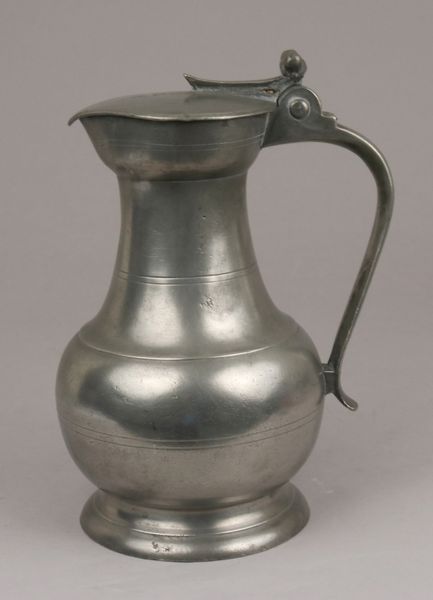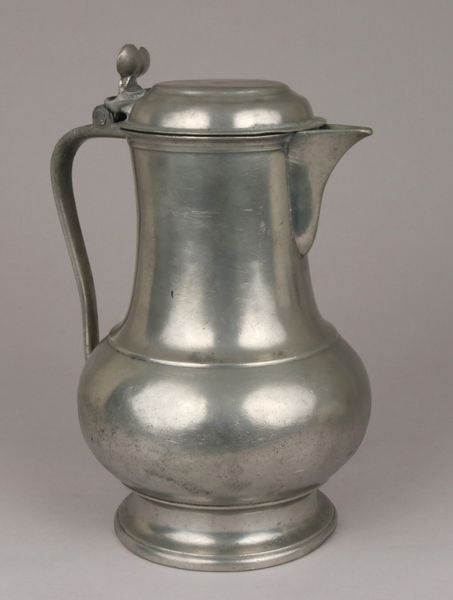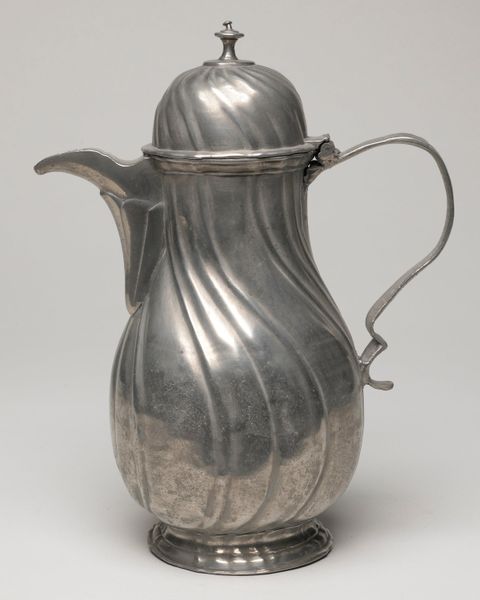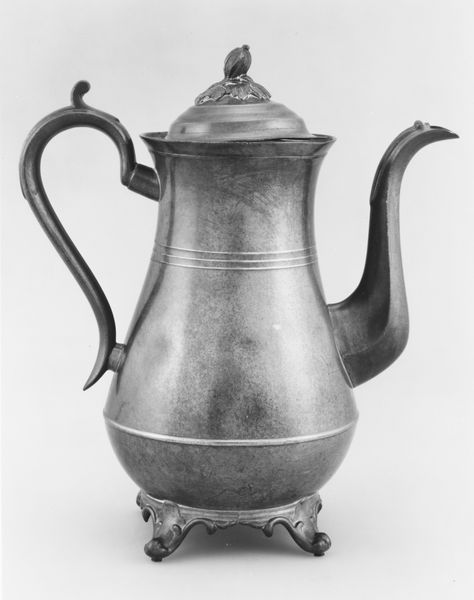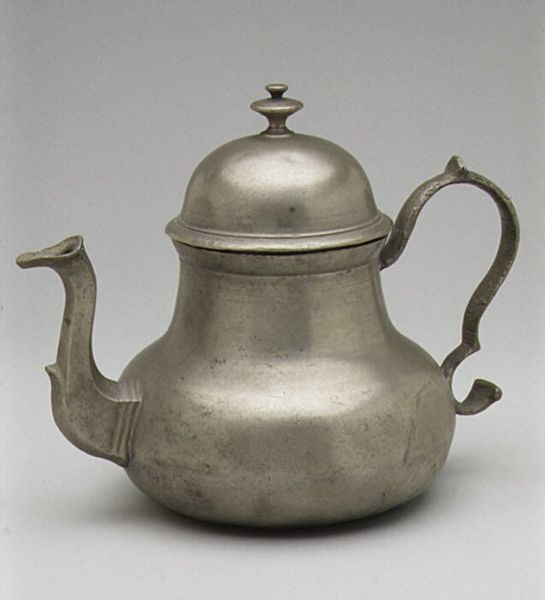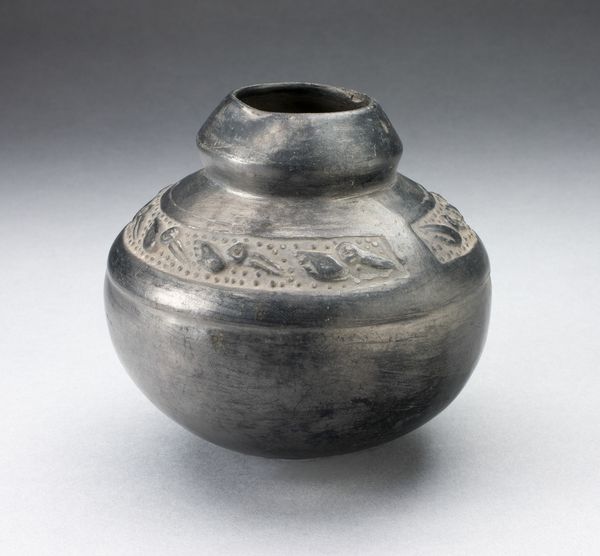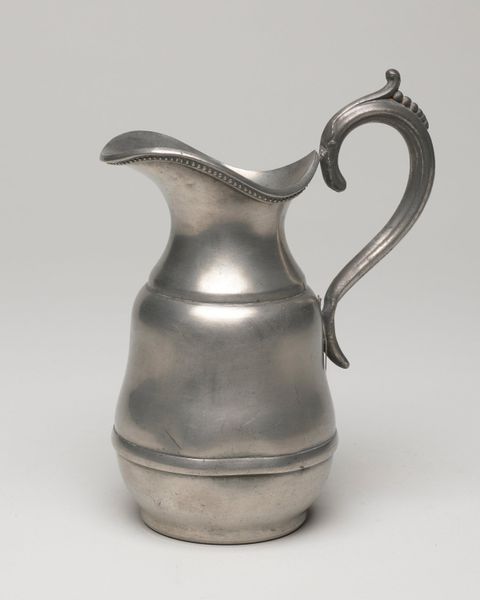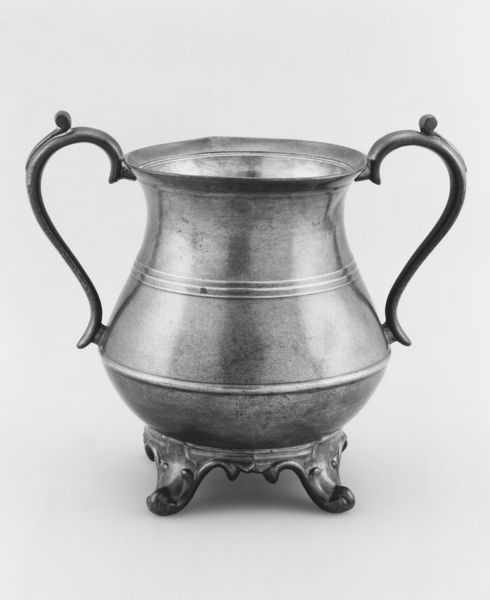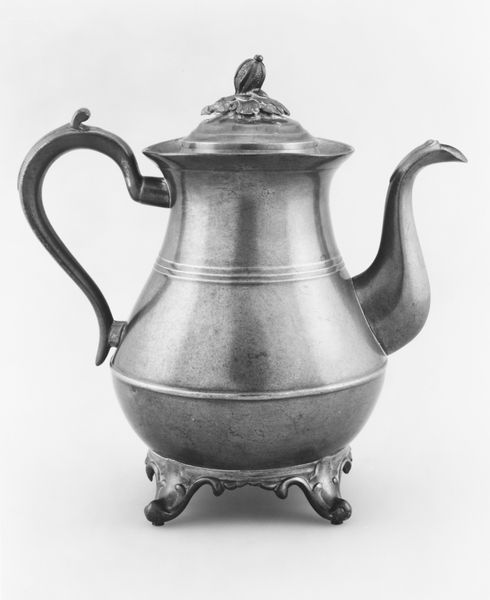
metal, ceramic, sculpture
#
metal
#
ceramic
#
stoneware
#
sculpture
#
ceramic
#
decorative-art
Dimensions: each: 15 1/2 × 10 1/8 × 8 7/8 in. (39.4 × 25.7 × 22.5 cm)
Copyright: Public Domain
These flagons were crafted in France by Joseph Samain around the mid-18th century from pewter. They offer a glimpse into the dining culture of the period. The flagons, with their robust form, reflect the increasing availability of metal goods to a broader segment of society. Pewter, less costly than silver, allowed the middle class to emulate the upper classes’ dining customs. The design also speaks to French aesthetics of the time, which favored a blend of practicality and understated elegance. The hinged lid and handle on one flagon suggest functional concerns, while the overall shape hints at a restrained opulence. Historical records, guild archives, and even period cookbooks can offer valuable insights into the societal rituals surrounding dining and drinking. These flagons, then, are not merely vessels but social artifacts that invite us to explore the rituals of dining and social exchange in 18th-century France.
Comments
No comments
Be the first to comment and join the conversation on the ultimate creative platform.
